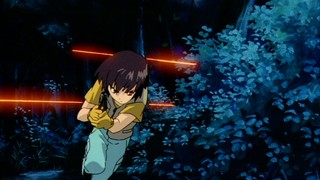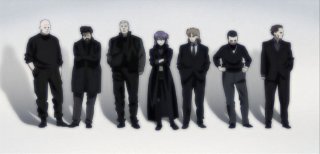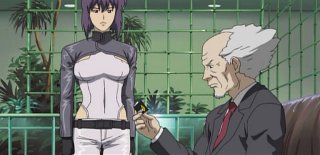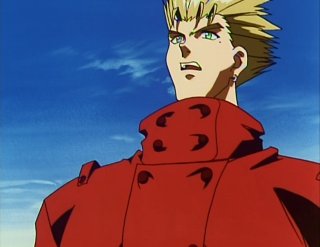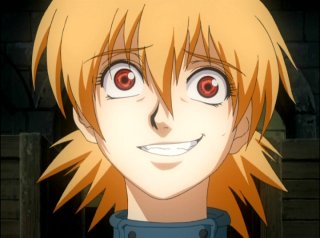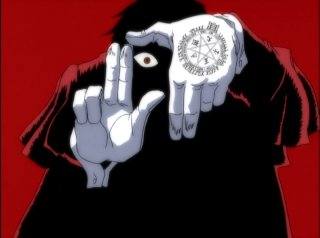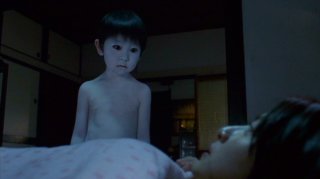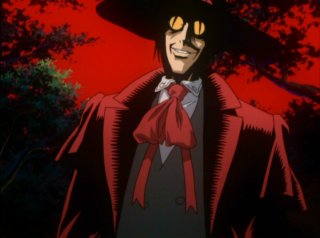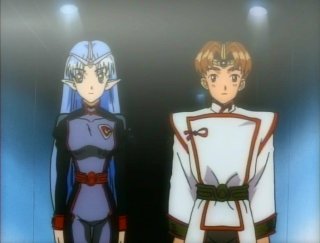Noir: Initial Thoughts
I am slowly making my way through the Anime queue I posted recently. I’m currently watching Noir and am a little less than halfway through the series. In no particular order, a few thoughts on Noir:
- The series follows Mireille Bouquet, a pretty blond assassin. Her professional career seems to be going quite well… until she is contacted by a young Japanese girl named Yumura Kirika, who asks Mirelle to take “a pilgrimage to the past.” Yumura is quite talented as well, though she also seems to be afflicted with Jason Bourne Syndrome (apparently a common condition among assassins). Together, the two seek to solve a mystery involving an ancient, myserious group called Les Soldats. As of yet, it’s unclear what role the girls play in the plans of the Soldats, but after a slow start, things seem to be unfolding at a good pace.
- Mireille takes contracts under the name “Noir.” She has built up a good reputation, but there are several hints of old hits that could not have been accomplished by Mireille, leading me to think of Noir as a sorta Dread Pirate Roberts of the contract killer world. Later in the series, Mireille and Yumura meet someone named Chloe who refers to herself as “The True Noir.” Chloe is an intriguing character, and one that has only just been introduced, so I’m expecting much more to happen with her (and her guardian at the vineyard). The word “noir” is French for “black” and is often used to describe dark stories featuring morally ambiguous characters. Film noir was a phrase coined by French film critics to describe Hollywood films of the 40s and 50s. So far, I would not say that this series follows any sort of Film noir conventions, but it’s something I’ve been keeping an eye out for…
- So the girls are racking up quite the body count. 12 episodes in and I think they’ve already outpaced legendary murderers like Jason Voorhees and Michael Myers. It seems that every episode features the girls taking on and killing dozens of armed minions. Apparently the regular appearance of 20 or so dead men is a common feature of French society (the series takes place in France). Nothing to get worked up over, even when the dead men are cops.
Yumura dodges some bullets…
- Also intriguing about the people of France as portrayed in the series is that they appear to be bloodless. Of the hundreds the two assassins have killed, apparently no blood was shed. Either their bullets are not very effective against them, or the French have invented a blood substitute that is far superior to our own (but provides no apparent benefit, except for easy cleanup).
- As assassins, it seems that the only tool in their assassin toolkit is a pistol. Apparently no long-range weapons like a sniper rifle, no hidden attacks like poisons and no “accidents” (unless, I guess, the accident involves someone falling on a bullet with a lot of force – an explanation I suspect the French police would accept). Still, the large amount of gunfights makes the series quite entertaining, though they never quite approach the balletic beauty of John Woo’s double-fisting pistol showdowns… though I suppose we still have 14 episodes or so to rectify that. Also, despite Yumura being much younger, she seems to be more effective than Mireille. At one point, the pair are trapped in a large casino. Their enemies turn off all the lights and wear night-vision goggles. Mireille is largely defeated by these tactics, while Yumura just closes her eyes and uses apparently superhuman auditory prowess to locate enemies and kill them (a neat trick). I guess it’s worth noting that Chloe eschews the pistol and uses all manner of knives instead.
- So far, the series has posed some intriguing questions. Who is Noir? How does one become Noir? Who are the Soldats? And how do the Soldats relate to Noir? There appear to be factions within the Soldats, which could lead to some interesting developments. I haven’t gone into it much, but there is a lot of tension between Yumura and Mireille, and there are a lot of questions about why the two are cooperating and what will ultimately happen to them. From all appearances, these are questions that will be answered later in the series, and from what I can tell, they are answered in a satisfying manner. It’s easy to create intriguing questions and a lot of series manage to do so (*cough, cough* Lost *Cough*), but many series fall apart once they reach the the resolution (the jury will remain out on Lost until it ends, but I will say that I was quite disappointed with the end of Battlestar Galactica.) So I look forward to the rest of this series!
A few more screenshots and commentary in the extended entry…
…
